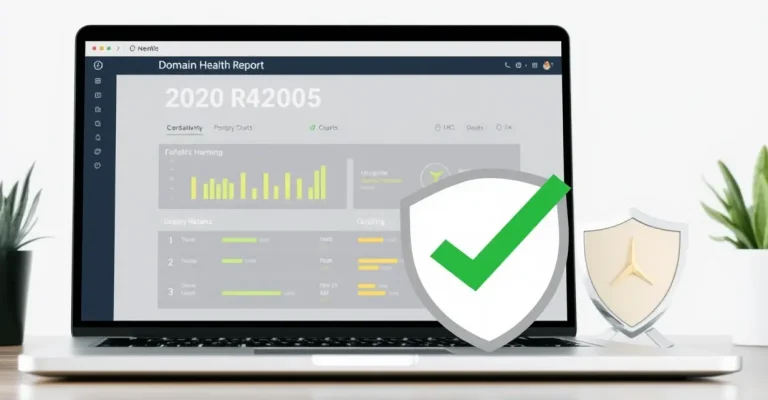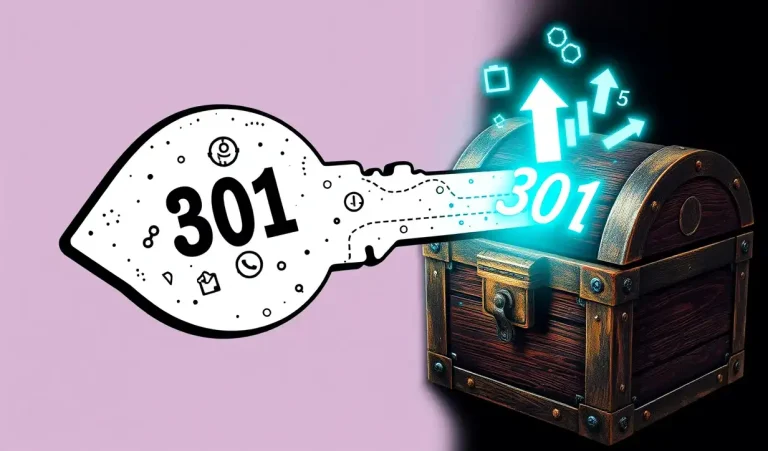Supercharge Your SEO: Expired Domains and 301 Redirects
In the ever-evolving landscape of Search Engine Optimization (SEO), gaining a competitive edge can feel like an uphill battle. Building website authority and climbing the search engine rankings often requires significant time, effort, and resources. But what if there was a strategic shortcut? Enter the world of expired domains – a powerful, yet often underutilized, asset that can breathe new life into your SEO efforts.
This comprehensive guide will demystify the process of using expired domain 301 redirects to effectively boost your website’s authority, traffic, and search rankings. You’ll learn what 301 redirects are, why expired domains offer a unique advantage, how to find suitable domains, the step-by-step implementation process, how to measure success, and critically, how to navigate potential risks.
Ready to discover how a seemingly ‘dead’ domain can become your SEO secret weapon? Let’s dive in. And if you want to find these potent domains without the endless searching, our daily list at [Your Service Name] can deliver them straight to your inbox!
What Exactly is a 301 Redirect and How Does it Affect SEO?
Before we explore expired domains, let’s nail down the basics. A 301 redirect is a permanent instruction that sends users and search engine bots from one URL to another. Unlike a temporary (302) redirect, a 301 tells search engines like Google that a page has permanently moved, and that the new URL should replace the old one in their index.
The magic of a 301 redirect in an SEO context lies in its ability to pass “link equity” (often referred to as “link juice”). Link equity is the value and authority a page accumulates from inbound links (backlinks). When you implement a 301 redirect correctly, a significant portion of this link equity, along with other ranking signals, is transferred from the old URL to the new one.
Key benefits of a properly implemented 301 redirect include:
- Consolidating link signals from multiple sources to a single, authoritative page.
- Directing users and search engines to the most current and relevant content.
- Preserving and passing on valuable SEO authority.
Check out 301 Redirects Explained: How They Impact SEO for a deeper dive.
Why Use an Expired Domain for a 301 Redirect Strategy? The Strategic Advantages
Now, why specifically use an expired domain for this? When a domain name isn’t renewed, it eventually “expires” and becomes available for re-registration. If chosen carefully, these domains can offer significant SEO advantages when redirected to your existing website:
- Instant Authority Injection: Imagine acquiring a domain that already has established Domain Authority (DA), Page Authority (PA), Trust Flow (TF), Citation Flow (CF), or Domain Rating (DR). By redirecting it, you’re essentially inheriting some of that pre-built authority, giving your target site an immediate SEO head start.
- Leveraging Existing Backlinks: Expired domains often come with a portfolio of existing backlinks. Redirecting the domain means these valuable links effectively start pointing to your site, saving you countless hours and resources typically spent on manual link-building outreach.
- Potential for Inherited Traffic: Some expired domains might still receive direct, referral, or even remnant organic traffic. A 301 redirect can channel this existing visitor flow to your website.
- Cost-Effectiveness: Compared to the ongoing costs and extensive efforts of large-scale link-building campaigns or content marketing initiatives, acquiring and redirecting a relevant expired domain can be a remarkably cost-efficient SEO tactic.
This strategy is particularly potent for boosting a new money page, strengthening a category page, or providing an overall lift to your site’s domain authority.
The Non-Negotiable: Why Relevance is CRITICAL for Expired Domain Redirects
This is a point that cannot be overstressed: relevance is paramount. Google’s algorithms are sophisticated. While 301 redirects can pass authority, redirecting an irrelevant expired domain to your site can, at best, be ineffective, and at worst, be flagged as a manipulative tactic.
- Topical Relevance: The expired domain’s previous content, niche, and overall theme should closely align with the content of your target website or the specific page you’re redirecting to. For example, redirecting an old, authoritative blog about “organic dog food” to your e-commerce page selling “premium dog treats” makes sense. Redirecting it to a website about “cryptocurrency trading” does not.
- Contextual Relevance of Backlinks: Ideally, the backlinks pointing to the expired domain should also come from sources that are thematically related to your niche.
Consequences of irrelevant redirects can include:
- The redirect being ignored by Google, meaning little to no authority is passed.
- A potential negative impact on your site’s perceived quality or even a manual penalty.
- A confusing and poor user experience if visitors arrive expecting something different.
Finding the Golden Needles: How to Identify Suitable Expired Domains for Redirects
Finding the right expired domain is part art, part science. Here are key metrics and factors to analyze:
- Domain Authority (DA) / Domain Rating (DR): High-level indicators of a domain’s overall strength (from Moz and Ahrefs, respectively).
- Page Authority (PA) / URL Rating (UR): Strength of specific pages, important if you plan to map redirects from old pages to new ones.
- Trust Flow (TF) & Citation Flow (CF): Majestic’s metrics indicating link quality (TF) versus link quantity (CF). A healthy TF/CF ratio (ideally TF close to or higher than CF) is desirable.
- Backlink Profile: Examine the number of referring domains, the quality and relevance of these links, and the anchor text distribution. Look for natural, diverse profiles.
- Domain History: Use tools like the Wayback Machine (Archive.org) to inspect the domain’s past content. Was it relevant? Was it spammy?
- Spam Score: Tools like Moz offer a Spam Score. While not definitive, a high score warrants deeper investigation.
- Indexation Status: Is the domain (or its key pages) still indexed in Google? Check with a site:domain.com search.
Tools for Evaluation: Keysearch, Ahrefs, SEMrush, Moz, Majestic, Wayback Machine, SpamZilla.
Our Solution: How NameScores.com Simplifies Your Search
Sifting through thousands of expiring domains daily is a monumental task. That’s where NameScores.com comes in. Our daily email list delivers pre-vetted expired domains with strong metrics, saving you invaluable time and effort. We highlight domains that show strong potential for 301 redirect strategies, focusing on authority and cleanliness.
Stop the endless hunt! Get high-potential expired domains delivered directly to your inbox. Sign up for the NameScores Daily Domains List today!
The Nitty-Gritty: Step-by-Step Implementation of Your Expired Domain 301 Redirect
Once you’ve acquired a promising expired domain, here’s how to implement the redirect:
- Acquire the Expired Domain: Register it through a domain registrar once it drops or secure it via a backorder service or auction.
- Basic Setup:
- Option A (Recommended for full control): Point the domain’s DNS (nameservers) to a simple, cheap hosting account.
- Option B (Simpler, less control): Use your domain registrar’s domain forwarding feature. Ensure it explicitly offers a “301 Permanent Redirect” option and isn’t just masked forwarding (which is bad for SEO).
- Choose Your Redirect Target Wisely:
- Redirect to Homepage: Good for a general authority boost to your entire site, especially if the expired domain’s topic was broadly relevant to your overall brand.
- Redirect to a Specific Inner Page: Ideal if the expired domain’s content was highly relevant to a particular product, service, or blog post on your site. This provides a more targeted authority boost.
- Deep dive into this decision here: [Link to: “Redirecting to Homepage vs. Inner Page: Which is Better?”]
- Implementing the 301 Redirect (Technical Options):
- Using .htaccess (for Apache servers, common on most web hosts):
Create or edit the .htaccess file in the root directory of the expired domain’s hosting. Add the following lines:RewriteEngine OnRewriteCond %{HTTP_HOST} ^olddomain.com [NC,OR]RewriteCond %{HTTP_HOST} ^www.olddomain.com [NC]RewriteRule ^(.*)$ http://www.yourtargetsite.com/$1 [L,R=301,NC]
Replace olddomain.com with the expired domain and www.yourtargetsite.com/$1 with the full URL you want to redirect to (the $1 ensures paths are carried over, if desired, or remove it to redirect everything to one page). - NGINX Server Config: If your hosting uses NGINX, the redirect rules will be different and typically set in the server block configuration file. Consult your host or NGINX documentation.
- Registrar/DNS Level Forwarding: If using this option, look for “domain forwarding” or “redirect” settings in your registrar’s control panel and select the 301 permanent option.
- Using .htaccess (for Apache servers, common on most web hosts):
- Verify the Redirect: Use an online HTTP status code checker (search “301 redirect checker”) to ensure your expired domain is correctly issuing a 301 status code to your target URL.
Did it Work? Monitoring the SEO Impact of Your 301 Redirects
After implementing your redirect, it’s crucial to monitor its impact. SEO changes take time, so be patient – you might not see results for several weeks or even a few months.
Key Performance Indicators (KPIs) to Track on Your Target Site:
- Organic Traffic: Use Google Analytics to monitor changes in organic search traffic to the redirected page or the site overall.
- Keyword Rankings: Employ SERP tracking tools (Ahrefs, SEMrush, AccuRanker, etc.) to see if rankings for relevant keywords improve.
- Backlink Profile: In Google Search Console (Links report) and tools like Ahrefs, watch for the backlinks from the expired domain to eventually be attributed to your target site.
- Indexation: Check if the expired domain’s URLs eventually de-index from Google or if Google starts showing your target URL for queries the old domain ranked for.
Navigating the Minefield: Risks and How to Mitigate Them
While powerful, using expired domain 301s isn’t without risks if not done carefully:
- Redirecting a Penalized Domain:
- Risk: You could inadvertently pass on a Google penalty (e.g., for spammy practices) from the expired domain to your site.
- Mitigation: Thorough due diligence is key. Scrutinize the domain’s history (Wayback Machine) and backlink profile for any signs of spam or manipulation.
- Irrelevant Redirects (Worth Repeating!):
- Risk: Google may ignore the redirect, passing little to no authority, or even view it as a manipulative tactic.
- Mitigation: Prioritize topical and contextual relevance above all else.
- Toxic Backlink Profile:
- Risk: The expired domain might have a history of low-quality, spammy backlinks that could harm your site’s SEO.
- Mitigation: Carefully analyze the backlink profile using tools like Ahrefs or SEMrush. If the domain is otherwise excellent but has a few toxic links, you could disavow them via Google Search Console before setting up the redirect (an advanced tactic).
- Broken Redirects / Redirect Chains:
- Risk: Improperly configured redirects or multiple redirects (A > B > C) can dilute link equity and create a poor user experience.
- Mitigation: Ensure your 301 redirect is implemented correctly and points directly from the expired domain to the final target URL. Verify with a redirect checker.
- “Too Many Redirects” Signal (Over-Optimization):
- Risk: Aggressively redirecting numerous low-quality or irrelevant expired domains can look like a manipulative scheme to Google.
- Mitigation: Focus on quality over quantity. A few highly relevant, authoritative redirected domains are far more beneficial (and safer) than dozens of weak or unrelated ones. Learn more: [Link to: “Can Too Many 301 Redirects Hurt Your Site?”]
Real-World Success: Examples & Case Studies
The strategic use of expired domain 301 redirects has helped countless websites achieve significant SEO gains. Imagine a scenario where a local bakery’s website (“sweetdelights.com”) acquires an old, authoritative food blog (“regionbestbakes.com”) that was specific to their city. By 301 redirecting “regionbestbakes.com” to “sweetdelights.com,” they could see a noticeable uplift in local search rankings, domain authority, and customer inquiries.
Check out Case Study: An Expired Domain 301 Redirection Experience.
Harnessing Expired Domain Power Responsibly
Expired domain 301 redirects offer a potent opportunity to accelerate your SEO success by leveraging pre-existing authority and backlinks. When executed thoughtfully and strategically, this technique can provide a significant competitive advantage.
Remember the cornerstones of a successful and safe expired domain redirect strategy:
- Deep Due Diligence: Thoroughly vet any domain before acquisition.
- Unyielding Relevance: Ensure topical alignment between the expired domain and your target site.
- Proper Implementation: Set up your 301 redirects correctly to pass maximum value.
This isn’t a magic bullet, but a powerful tool in your SEO arsenal. Use it wisely, and you can indeed supercharge your website’s performance.
Ready to find those high-quality expired domains without the headache? NameScores.com curates a daily list of promising domains, perfect for your 301 redirect strategy, building new projects, or finding high-resale value names.



